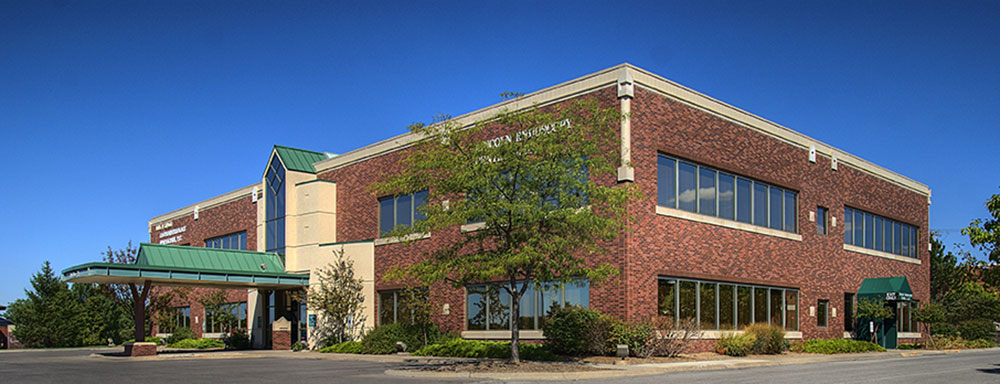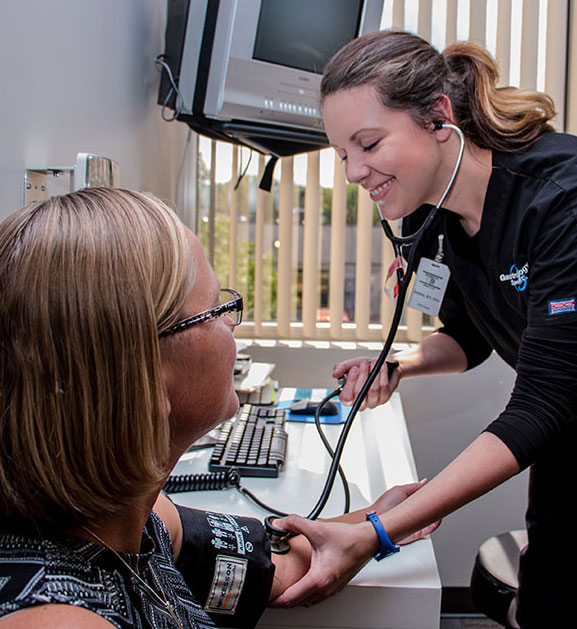Pancreatitis Basics
- The pancreas is a gland that sits behind the stomach.
- Larger than your gallbladder, but smaller than the liver, the pancreas plays a key role in the digestive system.
- Pancreatitis is inflammation of the pancreas that usually begins as a sudden attack and is often caused by gallstones or alcohol abuse.
- Symptoms of acute pancreatitis often start with a gradual or sudden severe pain in the center part of the upper abdomen going through to the back.
- Treatment for pancreatitis often focuses on the nutritional and metabolic needs of the patient and on relieving pain.
- Most people with chronic pancreatitis have a good prognosis if they follow their treatment regimen.
Pancreatitis Glossary
Acute pancreatitis: The initial stage of pancreatitis, characterized by gradual or sudden severe pain in the center part of the abdomen that moves around to the back, signaling a damaged or irritated pancreas. Some people have more than one attack and recover completely after each, but acute pancreatitis can be a severe, life-threatening illness with many complications.
Bile: A secretion of the liver that helps digest fats in the intestines.
Biliary system: The ducts and tubes that collect and drain bile from the liver into the small intestine.
Chronic pancreatitis: Occurs when the symptoms of acute pancreatitis continue to recur. Usually due to years of excessive alcohol consumption, this condition may also develop from other causes of pancreatitis.
ERCP (endoscopic retrograde cholangiopancreatography): A long, narrow tube, called an endoscope, is used to examine the pancreas, pancreatic duct, common bile duct, and/or sphincter of Oddi. The scope can be used to inject contrast dye into the pancreas to highlight stones or blockages and can be used to remove blockages.
Diabetes mellitus, Type I: A condition in which the pancreas does not produce enough insulin to metabolize carbohydrates.
Endocrine: An internal gland secretion directly into the blood stream.
Exocrine: The external secretion of a gland through a duct into the intestine.
Jaundice: The skin and/or white of the eyes turns yellow; itching may or may not occur.
Pancreas: A gland that sits behind the stomach and produces insulin to metabolize sugar and secretes enzymes to break down fats, proteins and carbohydrates.
Pancreatic duct: Drains pancreatic enzymes into the small intestine.
Pancreatic pseudocyst: Accumulation of fluid and tissue debris.
Sphincter of Oddi: A circular, contracting muscle at the intestinal opening of the bile and pancreatic ducts.
To help you understand and manage your condition, the AGA Institute provides you with the following information, designed to give you some basic facts, to help you better understand your condition and to serve as a starting point for discussions with your doctor.
The Pancreas
The gland that sits behind your stomach is called the pancreas and it plays a key role in the digestive system: its juices join bile from the liver and gallbladder to drain into the small intestine. Specifically, the pancreas:
- Secretes digestive juices enzymes and a substance called sodium bicarbonate into the small intestine.
- Produces the hormones, including insulin and glucagon, that control your body’s ability to use sugar (glucose).
The digestive juices of the pancreas split your diet’s fats, proteins and carbohydrates into digestible molecules.
Pancreatitis
Pancreatitis usually begins as a sudden (acute) attack. When the pancreas becomes inflamed, its digestive enzymes attack the tissue that produces them. One of these enzymes, called trypsin, can cause tissue damage and bleeding, which may cause the pancreas tissue cells and blood vessels to swell. In some cases, the attacks may recur frequently over time, which is known as chronic pancreatitis.
With chronic pancreatitis, the pancreas may eventually stop producing the enzymes that are necessary for your body to digest and absorb nutrients. This is called exocrine pancreatic failure. Dietary fat and protein may be poorly digested or absorbed, which can result in persistent diarrhea and weight loss. When chronic pancreatitis is advanced, the pancreas can also lose its ability to make insulin; this is called endocrine failure and may result in the development of diabetes mellitus.
There are two stages of pancreatitis: acute and chronic.
Acute Pancreatitis
This condition can occur suddenly, soon after the pancreas becomes damaged or irritated by its own enzymes. Although acute pancreatitis is not fully understood, its causes are usually gallstones or alcohol abuse. When gallstones pass through the bile duct, they may become stuck, causing normally produced pancreatic enzymes to build up in the pancreas and ultimately damage the pancreas.
In the case of alcohol, the pancreas may be sensitive to the effects of excessive alcohol. An attack may occur anywhere from a few hours to one to two days after drinking alcohol. The amount of alcohol that needs to be consumed to cause pancreatitis will vary from person to person; it usually occurs after a pattern of excessive abuse, such as from binge drinking or excessive daily alcohol use.
Other less common causes of this condition are:
- Excessive levels of fat particles in the blood (triglycerides).
- Infections such as mumps.
- Some medications.
- Certain surgical procedures.
- Heredity.
- Idiopathic (unknown causes).
Acute pancreatitis affects about 80,000 Americans every year.
Chronic Pancreatitis
This stage of pancreatitis begins as acute pancreatitis and becomes chronic when the pancreas becomes permanently injured or scarred from repeated attacks of pancreatitis. Rarely, chronic pancreatitis may develop after one severe attack of acute pancreatitis.
Chronic pancreatitis is usually due to years of excessive alcohol consumption, but may also develop from other causes of pancreatitis.
Differences Between Acute and Chronic Pancreatitis
Most cases of acute pancreatitis are mild and involve a short hospital stay to help heal the pancreas. Chronic pancreatitis is a much more persistent condition. It occurs more often in men than women. Both acute and chronic pancreatitis can be mild or severe and may have the same symptoms.
Often the only way to distinguish between acute and chronic pancreatitis is to look for visible scar tissue in the pancreas as seen by an abdominal X-ray, ERCP (endoscopic retrograde cho-langiopancreatography), MRCP (magnetic resonance cholang- iopancreatography), endoscopic ultrasound, or through evidence of chronic damage to the pancreas that it cannot produce digestive enzymes (causing fatty diarrhea) or insulin (diabetes).
Pancreatitis Symptoms
Symptoms include:
- A gradual or sudden severe pain in the center part of the upper abdomen going through to your back; this pain may get worse when you eat and builds to a persistent pain.
- Nausea and vomiting.
- Fever.
- Jaundice (a yellowing of the skin) due to blockage of the bile duct from the inflamed pancreas.
- Weight loss.
Due to the toxic effect of alcohol on pancreatic tissue, scarring can occur very early; therefore the first attack of acute pancreatitis can often occur on a gland that is very scarred and may be considered an acute flare of chronic pancreatitis. Pseudocysts, which are accumulations of fluid and tissue debris, may also develop.
In rare cases, recurrent or chronic pancreatitis may lead to the development of cancer of the pancreas, an unchecked growth of abnormal cells in the pancreas.
If You Think You Have Pancreatitis…
Call your doctor. Your doctor will:
- Take a medical history.
- Ask about your drinking history.
- Draw blood to test for pancreatic enzymes.
- Order an ultrasound, CT and/or MR scan of the abdomen, an endoscopic ultrasound or other test to determine the degree of pancreas damage.
If you have unexplained weight loss that lasts more than a few weeks, call your doctor. This can be a warning sign of pancreatic cancer.
Pancreatitis Treatment
Your doctor will focus treatment on your nutritional and metabolic needs and on relieving your pain. Mild pain can be treated with analgesics.
In addition:
- If the cause of acute pancreatitis is gallstones, you may have to have your gallbladder removed to prevent further attacks.
- If the bile duct is found to be enlarged, you may need an ERCP to drain it. An ERCP is a way your doctor can examine your pancreas, pancreatic duct, the bile ducts, and/or the sphincter of Oddi. It involves passage of a long, narrow tube with a light and a camera at the end called an endoscope, through your mouth into your esophagus, stomach, and to the beginning of the small intestine. There, the endoscope is used to put x-ray contrast dye into the bile and pancreas ducts to look for gallstones or other blockages. In severe cases, surgery will be required to drain the pancreatic duct or to remove part of the pancreas.
- Your doctor will also likely give you dietary guidelines to follow in order to reduce the amount of fats you eat, since your body has trouble digesting these substances.
- You may also need to take pancreatic enzyme supplements, which are in the form of a tablet, every time you eat a meal. These supplements will help your body absorb food, and help you regain some of the lost weight.
- A low-fat diet and the enzyme supplements may help control pain by reducing stimulation of the pancreas.
- If you drink alcohol, you need to stop drinking.
- If you have a pancreatic pseudocyst, it may need to be drained by an endoscopic, radiological or surgical procedure.
Pancreatitis Prevention
While pancreatitis is still not fully understood, there are some steps you can take to prevent pancreatitis from occurring again:
- If the cause is gallstones and your gallbladder has not been removed, avoid fatty and greasy foods, such as butter and fried eggs.
- Work with your gastroenterologist to develop a healthy eating plan.
- Ultimately, you may need your gallbladder removed. Your doctor should help you decide whether this surgery is needed.
- If the cause is alcohol, you should stop drinking altogether.
Hope for the Future
Most people who have chronic pancreatitis have a good prognosis if they follow the required dietary changes and take their medications and required supplements.
If their condition was caused by drinking, they will have a positive outcome if they stop drinking and continue follow-up treatment.


